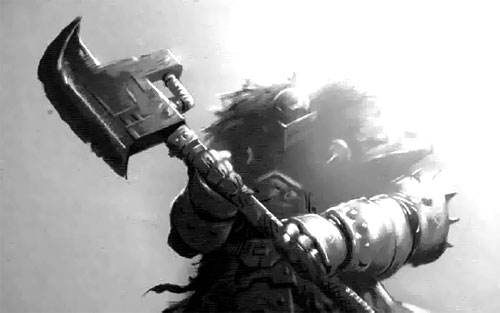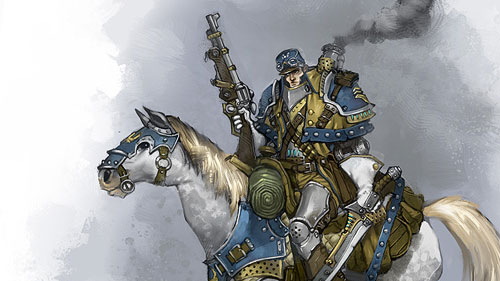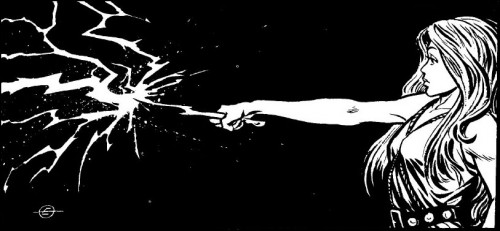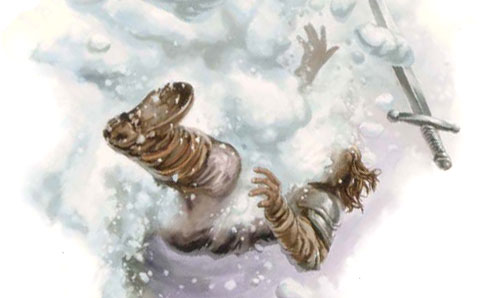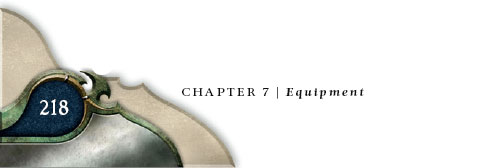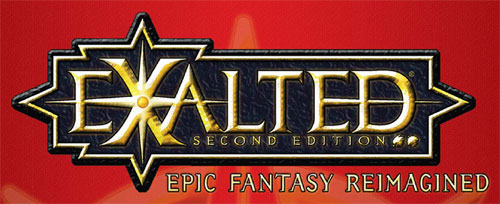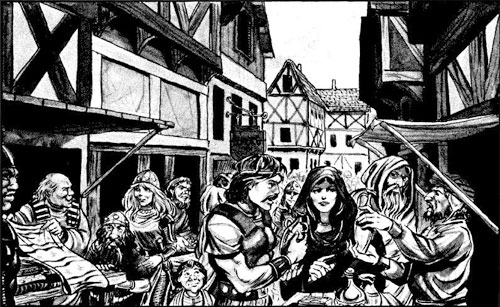
I picked up my 4th edition Dungeons & Dragons books the day they came out. I couldn’t help it; it’s a weakness of mine. I read through the rules, formed a few opinions, and got a hankering to run a game. Problem was that my playgroup is already hip-deep in a 3rd edition Forgotten Realms game, and I didn’t want to rock the boat by taking the reins from our current DM. So I waited. And jotted down some notes here and there about some adventure ideas.
Then, for reasons I would just as soon not go into on a blog, our campaign hit a bump and our DM isn’t really available at the moment. So we cracked open the books and four of us sat down for our first actual 4e game together. Jimbo put together a tough-guy hammer-and-shield Fighter, Daniel brewed up a halfling Warlock (Infernal Pact), and Jasper finally settled on a Warlord after strongly considering making a Cleric.
The new rules were foreign enough to these three that making characters required a bit of explanation, quite a few questions, and more than a little guesswork. When all was said and done, we were able to create three characters hailing from a desperate little foothills town with a Goblin problem. It had taken us about half a game session to make the characters, so I wanted to get straight to the action: they were on their way into Goblin territory to scout out a temporary logging operation. Times are so rough in town that gathering firewood for the season amounts to a military operation. Two skirmishes followed, which gave us a chance to flex our muscles and throw around some dice. A few observations:
- I would have had a really hard time making Goblin Tactics and Tide of Iron make sense to everybody at the table if I weren’t using a battle mat. Miniatures weren’t necessary; I just used some scraps of paper and used the grid to keep track of where everything was.
- Assuring that the party worked well together was a no-brainer. I encouraged them to each have a different party role (defender, striker, and leader, respectively) and the core rules character abilities took care of the rest.
- The Warlord ability Commander’s Strike works wonders along with the Fighter’s Combat Challenge against a badguy that’s trying to disengage from the fight: Fighter takes a double-move to get into position, Warlord goads the Fighter into a free basic attack, and now the fleeing ranged baddie is stuck.
- The Fighter works differently than he used to. Lots more reasonable options in the heat of the moment. Jimbo has been playing Fighters since I was in preschool, and after a little initial hesitation was right on top of his newly-refined party role, using Cleave and Tide of Iron to mop up minions and break up wolfpack flanking maneuvers like nothing. The Fighter rules have changed a lot, but Fighters haven’t really changed at all from what we really think of them as.
- The Warlock worked a lot like I used to wish Magic Users would, back when I thought Evocation spells were really cool. A Warlock can blast away all day, every day, with his curses and Hellish Rebuke really doing the heavy lifting when it came to parting the bad guys from their hit points. That’s the whole point of a “striker” character class, but it seemed to work out better than just reading the books had implied.
- The Warlord suffered from bad die rolls. Really bad die rolls all night. This made his Commander’s Strike and Inspiring Word abilities all the more important; he could be useful when he was rolling twos and threes.
- Whipping up appropriately-challenging encounters was a breeze. About 100xp worth of bad-guys per first-level character made for a pretty easy scrap. Throwing in an encounter of 125xp critters (two gray wolves and a Goblin Sharpshooter) challenged the party enough to blow a handful of healing surges and dropped the Warlock into negative hit points (largely due to some very good die rolls on my part).
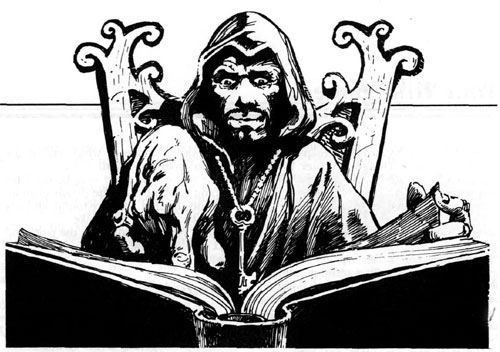
Overall, though I’m dismayed by the cause of the interruption in our 3rd edition game, I’m pleased with how this seriously-reworked new edition of Dungeons & Dragons worked out. I am highly interested in seeing what Privateer Press does with the system, if anything. The creation of new character classes strikes me as superficially labor-intensive, but there are a number of design features built into the new system that I think really help keep things on an even keel, particularly in the area of keeping characters of diverse themes useful.
Next time we have a 4e game session, I’ll have to try out the Skill Challenge system a bit. It is intended to make non-combat encounters a bit more playable within the rules framework (as opposed to a bunch of jibber-jabber finally resolved by a single die-roll by a single character), but the math just doesn’t look right to me. We’ll see what happens when we start throwing dice for determining the location of their logging camp. It’ll almost certainly be interesting, but statistically I’m betting that following the DMG’s guidance will lead to a failed encounter.
